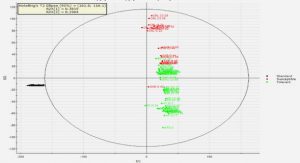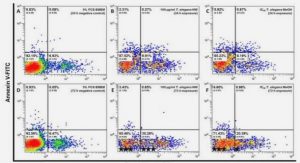Get Complete Project Material File(s) Now! »
Introduction
The study of othered flesh incorporates social-scientific and critical spatial theories in order to analyse the tattooed bodies of the ancient Mediterranean as bodies in space, as well as bodies as spaces themselves. The underlying assumption about the tattooed body, whether in ancient or in modern times, is that the body is othered from unmarked civilians because of the fact that the body has tattoos inscribed upon it, and that the messages embedded within the design of the tattoos could affect their bearers in terms of further othering due to the social interpretation of these tattoo designs. Based on this assumption, and the meaning attributed to the interpretation of tattoos in a social context, the tattooed body is understood to be a social body, and, as such, that the tattooed body can be analysed through social-scientific criticism.
The analysis of social values which are relevant to societal bodily practices allow the establishment of the social body as an entity within social space, as well as a spatial entity in itself. The body in space is analysed based on its social interaction within societal space, whereas the body as space is analysed based on the individual who bears the tattoos, and the meaning, affect, and esteem that are imparted to that individual by virtue of his or her marks.
This thesis aims to investigate the process by which tattooed individuals are othered from the ancient Mediterranean societies of Assyria (circa 3300 BCE-2100 BCE), Egypt (circa 2000 BCE-300 BCE) Nubia (circa 2000 BCE-300 BCE), Israel (circa 1500 BCE-1200 BCE), Greece (circa 510 BCE-323 BCE), and Rome (circa 510 BCE-323 BCE). This othering is investigated in terms of a social-scientific investigation into the cultural values which apply to the tattooing practices in which these cultures engage. The investigation is continued in terms of a critical spatial exploration of the effect of this othering upon the tattooed body in space, based on the access to or restriction from public spaces based on the tattoos which an individual bears, as well as the effect that the tattooing process itself, and the othering has on the individual’s body as space, in terms of personal and social esteem.
CHAPTER ONE INTRODUCTION
1. Introduction
2. Rationale of the Study
3. Motivation for the Study
4. Research Problem
5. Research Approach
6. Methodology
7. Objectives of the Study
8. Expected Results
9. Breakdown of Chapters
10. Summary and Conclusion
CHAPTER TWO RESEARCH DESIGN AND METHODOLOGICAL OVERVIEW
1. Introduction
2. Research Methodology
3. Social-Scientific Criticism
4. Critical Spatiality
5. Bodily Studies and Bodily Symbolism
6. The Body in Space
7. The Body as Space
8. Tattooing
9. Iconography
10. Summary and Conclusion
CHAPTER THREE THE HISTORICAL AND CONTEXTUAL OVERVIEW OF THE ANCIENT MEDITERRANEAN
1. Introduction
2. The Geographical and Historical Contextualisation of the Ancient Mediterranean
3. The Social, Military, and Religious Practices of the Ancient Mediterranean Cultures
4. Cultural Practices Related to Tattooing
5. Summary and Conclusion
CHAPTER FOUR DATA PRESENTATION AND ANALYSIS
1. Introduction
2. Analytical Model of Boundary Relations
3. Application of the Analytical Model to Assyrian Culture
4. Application of the Analytical Model to Egyptian Culture
4.1 Contextualisation of Cultural Tattooing Practices
4.2 General Boundary Relations and Associated Research Questions
4.3 Social-Scientific Boundaries
4.4 Social-Scientific Research Questio
4.5 Critical Spatial Research Questions (Thirding-as-Othering)
4.6 Boundary Relations of the Tattooed Body in Space
4.7 Boundary Relations of the Tattooed Body as Space
4.8 Iconographic Research Questions
4.9 Iconographic Interpretation of Tattoos
5. Application of the Analytical Model to Nubian Culture
5.1 Contextualisation of Cultural Tattooing Practices
5.2 General Boundary Relations and Associated Research Questions
5.3 Social-Scientific Boundaries
5.4 Social-Scientific Research Questions
5.5 Critical Spatial Research Questions (Thirding-as-Othering)
5.6 Boundary Relations of the Tattooed Body in Space
5.7 Boundary Relations of the Tattooed Body as Space
5.8 Iconographic Research Questions
6. Application of the Analytical Model to Israelite Culture
7. Application of the Analytical Model to Graeco-Roman Culture
8. Social-Scientific Comparison of Ancient Mediterranean Tattooing Practices
9. Summary and Conclusion
CHAPTER FIVE SUMMARY, REFLECTION, AND CONCLUSION






